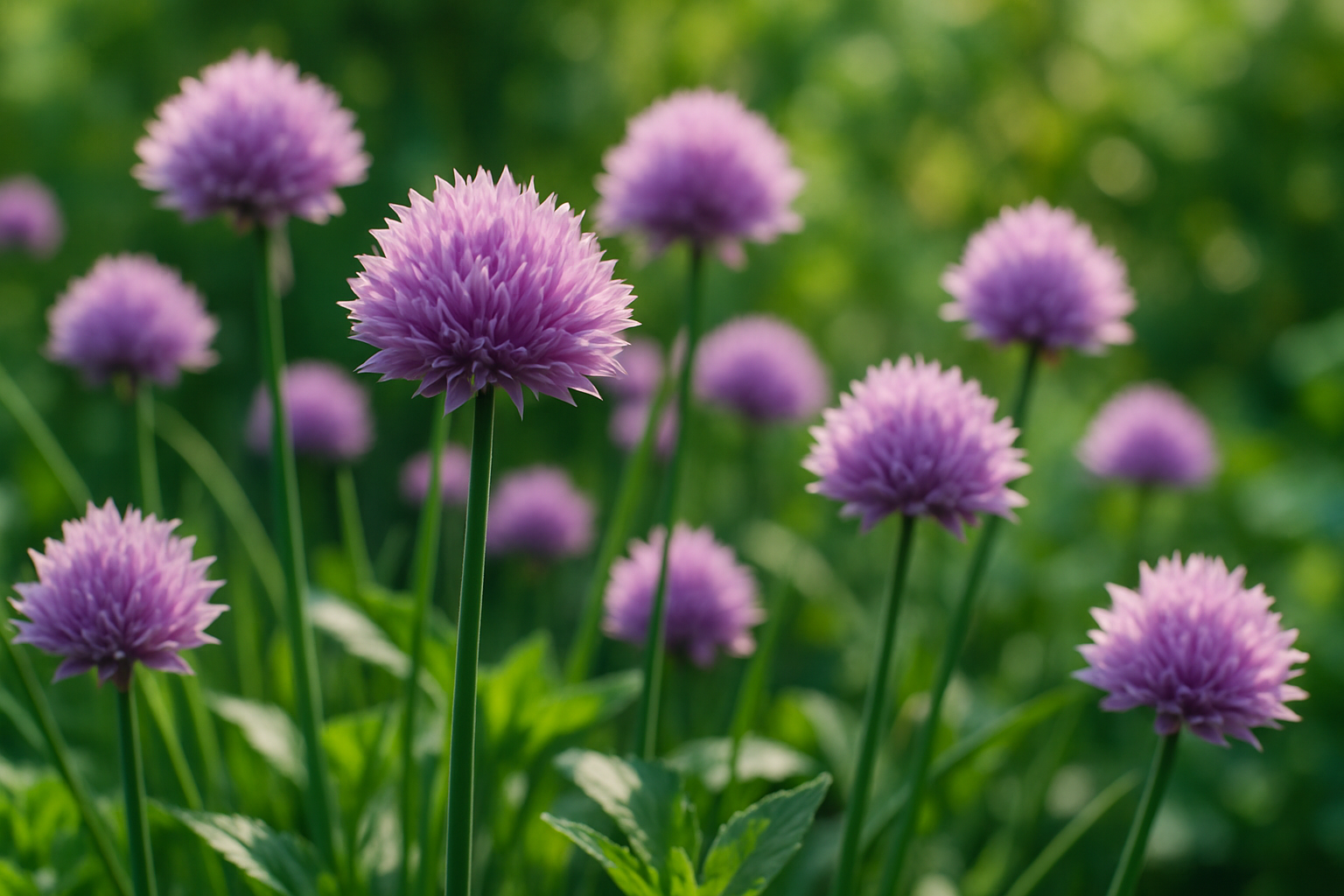Introduction to Chive Flowers
If you’ve ever spotted a cluster of delicate purple pom-poms rising above a patch of slender green stalks, you’ve likely encountered a chive flower. The practice of harvesting chive flowers has recently gained popularity, as more gardeners and food enthusiasts discover just how beautiful and edible these blossoms are.
Chive plants, part of the allium family alongside onions and garlic, produce vibrant flowers in late spring and early summer. These blooms aren’t just a visual delight—chive flowers offer a mild, onion-like flavor with a hint of garlic, making them a versatile ingredient in the kitchen.
People are embracing chive flowers to elevate salads, infuse vinegars, garnish soups, or simply decorate dishes with their cheerful hue. Whether you’re tending to a backyard herb patch or browsing the farmer’s market, harvesting chive flowers brings both flavor and color to your culinary adventures.
Are Chive Flowers Edible? Benefits & Safety
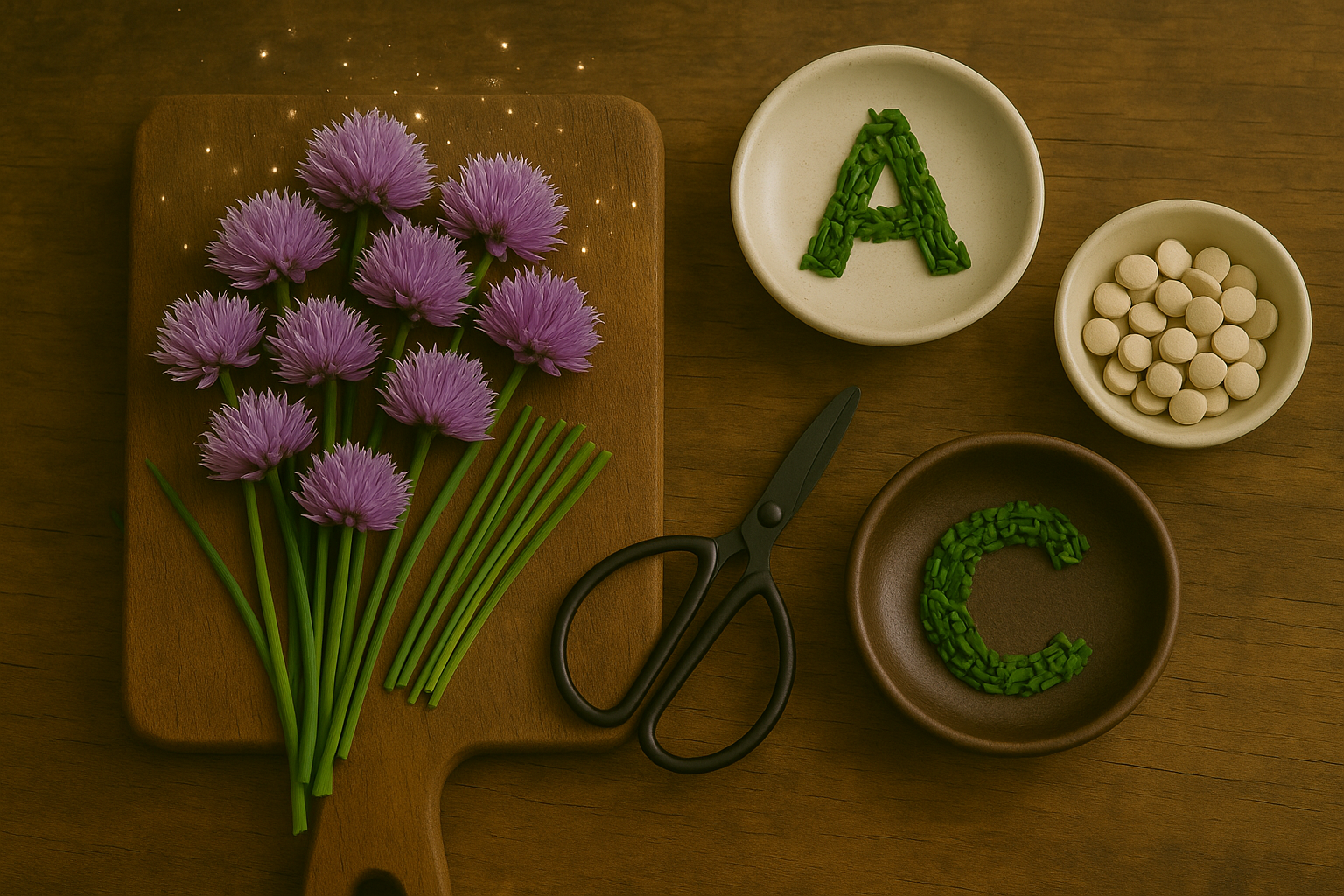
Chive flowers are not only edible but also a delightful addition to many dishes. While chive stems have a mild onion flavor, the blossoms offer a subtler, slightly garlicky sweetness that works wonderfully in salads, compound butters, or as vibrant garnishes.
Nutritionally, chive flowers provide vitamins A and C, along with small amounts of beneficial minerals like calcium and potassium. They’re also rich in antioxidants, which help fight off cell-damaging free radicals.
Some people worry about toxicity, mistaking chive flowers for other alliums that can be harmful. Rest assured, chive flowers (from Allium schoenoprasum) are safe for human consumption in reasonable amounts. However, if you’re foraging wild plants, always be absolutely sure of your identification, as lookalike flowers can be unsafe.
People who are prone to allergies from members of the allium family (like onions or garlic) should test a small amount first. Wash chive flowers thoroughly before eating to remove dirt or insects, and avoid using flowers that have been sprayed with pesticides or herbicides.
For the freshest flavor and best nutritional value, harvest just-opened blossoms and try to use them the same day. Enjoy these beautiful edible flowers to add both nutrition and visual appeal to your meals!
When and How to Harvest Chive Flowers
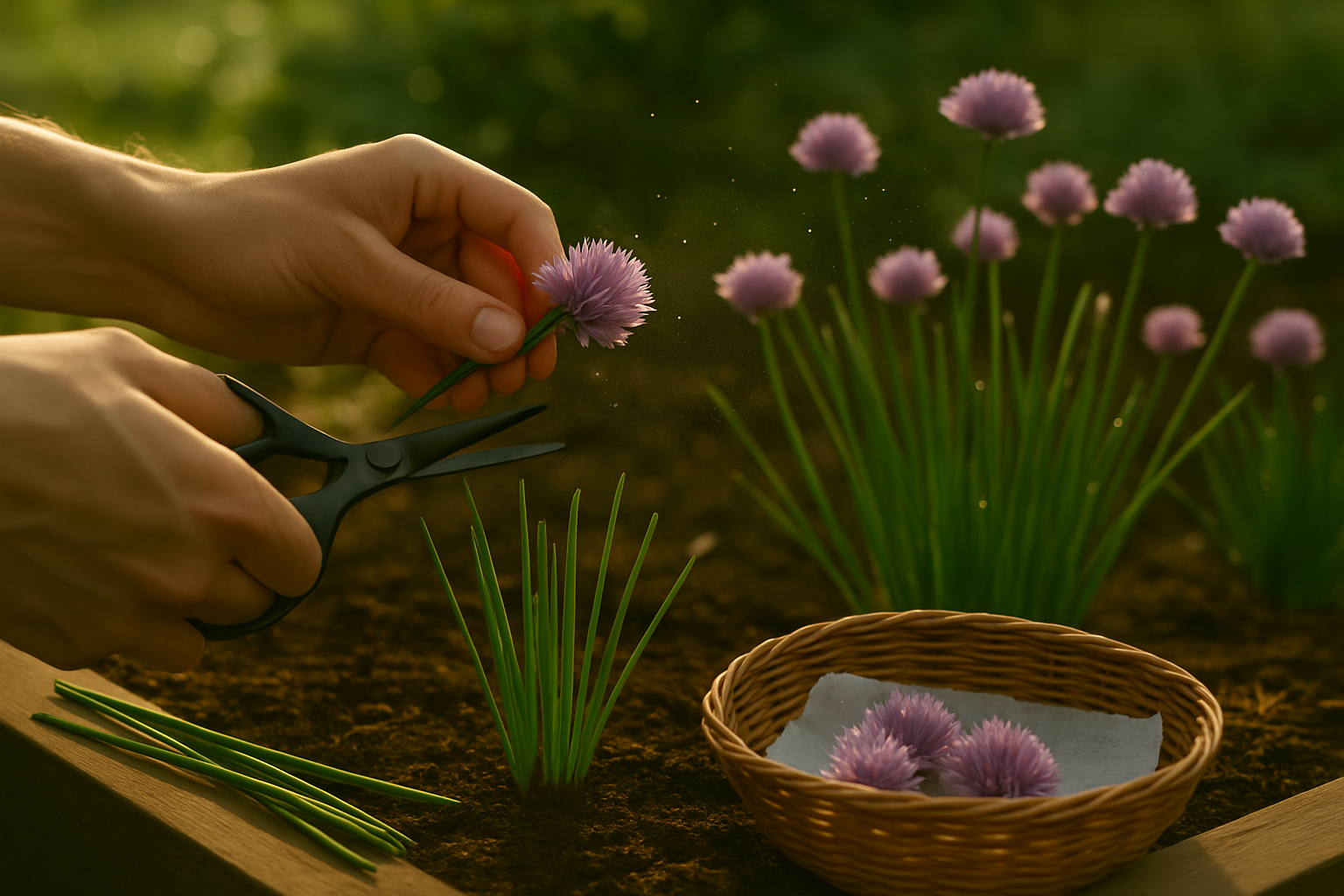
The best time to harvest chive flowers is in late spring to early summer, just as the round lavender-pink blooms first open. For optimal flavor, pick the flowers when they’re fresh, vibrant, and not yet faded or drying out. These just-opened chive blossoms offer the best taste and texture for culinary uses like salads or infused oils.
To harvest, choose a dry morning after the dew has evaporated—this ensures the blossoms are fresh and less likely to mold. Using clean, sharp scissors or garden shears, snip the blossom stem about 2 inches above the plant’s base, taking care not to cut into the leaves below. Gently hold the cluster so the petals aren’t crushed, and place them in a basket or container lined with a damp paper towel to prevent wilting during transport.
Collect only as many as you need, and never harvest all the flowers at once—leaving several blooms promotes ongoing pollinator activity and encourages new flower buds to form. After harvesting, tidy up the plant by removing any withered flowers or discolored stems. This quick pruning stimulates growth, helps prevent disease, and supports continual blooming throughout the season.
Regular flower harvesting not only keeps your chive patch looking neat but also enhances the plant’s vigor. Well-pruned chives tend to send up fresh shoots faster, resulting in a lush, productive herb patch for months to come.
Preparing Chive Blossoms for Eating
Preparing chive blossoms for eating is simple but requires a gentle touch. Start by harvesting fresh, fully opened flowers—snip them early in the day when they’re crisp and fragrant. Rinse the blossoms briefly in cold water to remove dirt or insects, swishing them gently and avoiding too much agitation. Over-washing can make the petals soggy and limp.
Place the rinsed blossoms on a clean kitchen towel or paper towel and carefully pat them dry, taking care not to crush the delicate flowers. To use the flowers whole, simply trim off the tough green stems, leaving just enough so they hold together. For a subtler look or more even distribution in dishes, pull the blossom apart into individual florets by gently pinching the base and loosening them with your fingers.
Whole chive blossoms make beautiful garnishes for salads, soups, or omelets, while florets add a mild onion flavor when sprinkled over avocado toast or mixed into compound butter. Avoid soaking the blossoms in water or drying them under harsh sunlight, as these methods cause wilting and loss of flavor. The key is to handle the blossoms lightly at every step, preserving both their vibrant color and delicate taste.
Culinary Uses of Chive Flowers
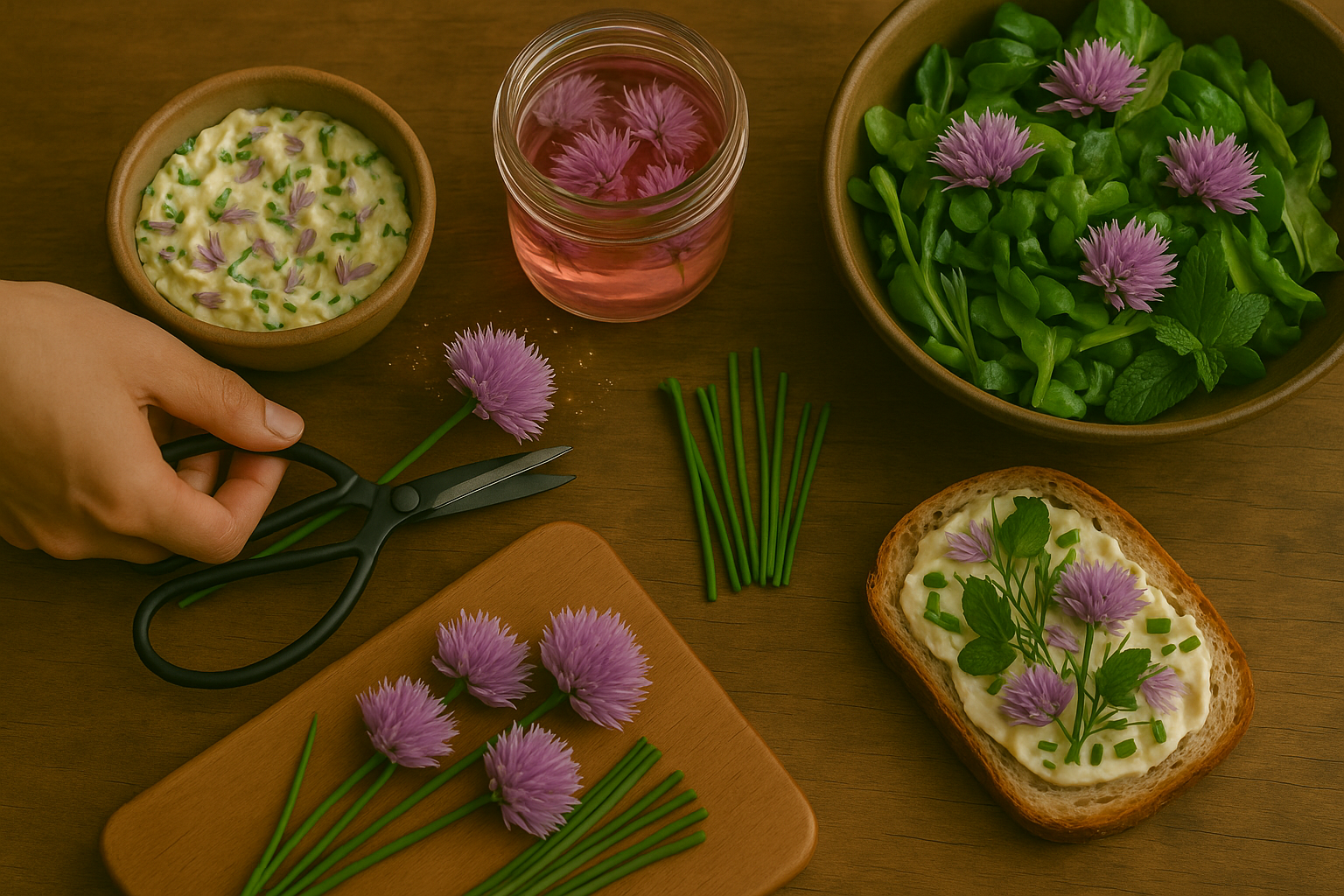
Chive flowers aren’t just eye-catching in the garden—they’re a flavorful way to elevate your kitchen creations. With their delicate purple petals and mild onion-garlic taste, these blossoms can be scattered over salads for a colorful, tasty crunch or whipped into creamy butters to spread on bread and grilled veggies.
Simply blend softened butter with chopped chive flowers and a pinch of salt for a quick floral spread that’s perfect with spring dishes. Chive blossom vinegar is another simple, beautiful idea: just pack a mason jar with rinsed flowers, cover them with white wine vinegar, and let them infuse for a week. The result is a blush-pink vinegar with subtle onion notes—fantastic in homemade vinaigrettes or drizzled over roasted potatoes.
For traditional uses, look to European cuisine, where chive flowers garnish deviled eggs and potato salads. You can also try adding them as a fresh topping to creamy soups or soft cheeses for an instant flavor boost. Sprinkle the florets onto open-faced sandwiches, omelets, or seafood dishes, where their edible beauty really shines.
Don’t be afraid to mix them with other garden herbs like dill, parsley, or mint for a truly vibrant, homegrown finishing touch. Chive flowers effortlessly bridge the gap between pretty plating and distinctive flavor—they’re a small tweak that makes any everyday meal feel a bit more gourmet.
Preserving, Storing & Other Uses
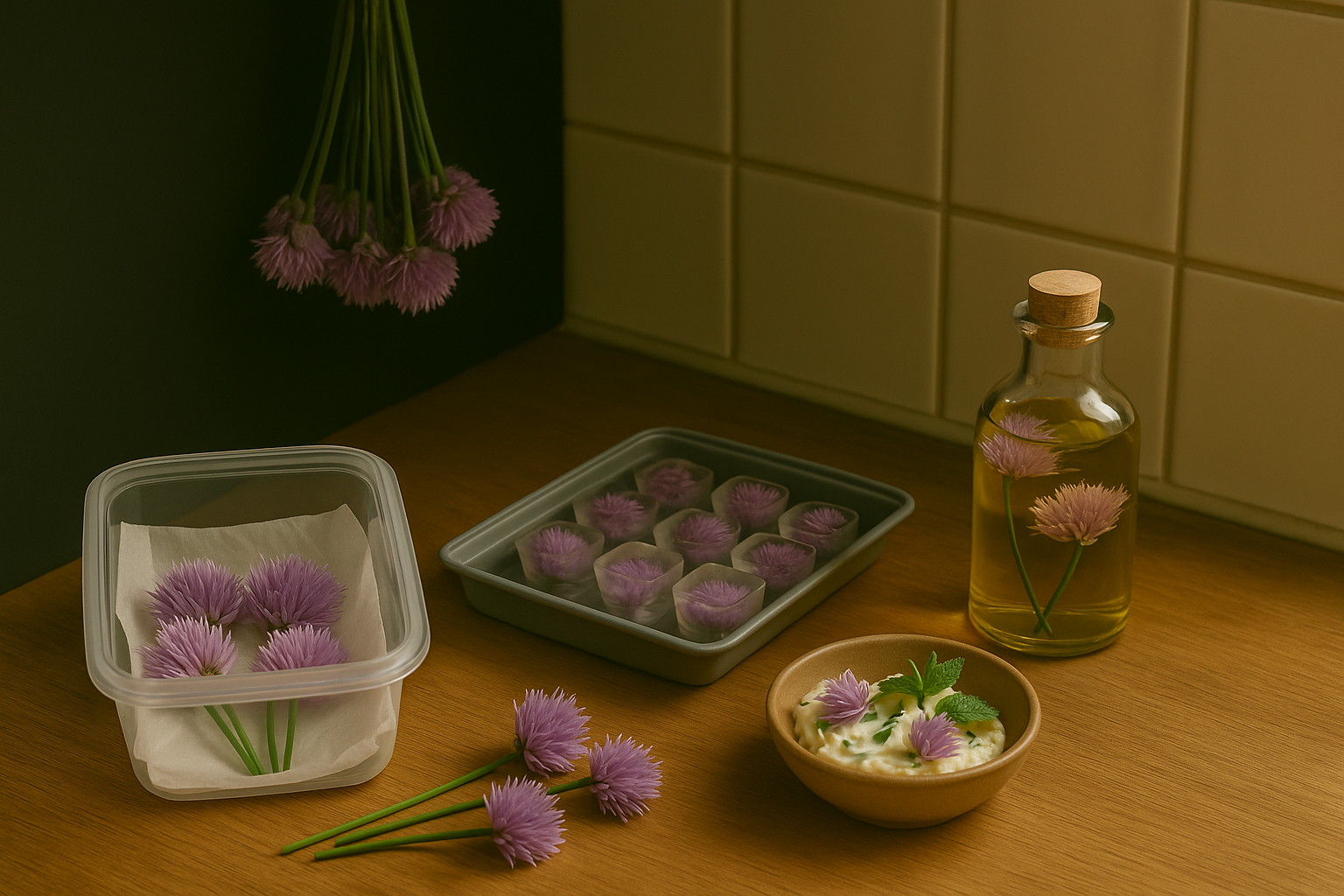
For short-term storage, keep edible flowers in the refrigerator, ideally wrapped in damp paper towels and sealed inside an airtight container to maintain freshness. Alternatively, if you only need them for a few hours, submerge their stems in a glass of cool water, just like you would with cut flowers.
For longer-term preservation, gently dry flowers by hanging small bunches upside down in a warm, dark, well-ventilated area. This method helps retain both color and delicate flavors.
You can also freeze flowers in ice cubes for a decorative touch in cold drinks, or store them in sealed freezer bags after spreading them on a tray to flash-freeze.
Infusing flowers in oils or vinegars is a creative way to capture their unique flavors for dressings or marinades. Just make sure the flowers are cleaned and completely dried before adding them to prevent bacterial growth.
To preserve color and flavor, always harvest flowers early in the morning when their moisture content and essential oils are highest, and avoid direct sunlight during storage.
If you have an abundance of flowers, composting is an eco-friendly option that turns waste into rich soil. Using dried flowers for decorative purposes—such as potpourri, pressed art, or garnishes—adds elegance while reducing waste.
FAQs & Troubleshooting
Harvesting chives after they flower is perfectly fine, but keep in mind that the stems may become tougher and the flavor a bit milder. For the best taste, trim leaves before the plant blooms. If you miss that window, simply snip back any flowering stems to encourage tender new growth.
Most chive varieties—common, garlic, or Chinese—are edible, including their flowers, which make beautiful garnishes.
If your chives taste bitter, it could be due to old or tough leaves, excess heat, or late harvesting. In that case, cut back the entire plant to encourage fresher shoots.
Drooping flowers often indicate underwatering, so make sure your chives receive consistent moisture, especially during hot spells.
For insect damage, regularly inspect for aphids or thrips and rinse leaves with a strong jet of water or use insecticidal soap as needed. Always follow label instructions for safe use.
